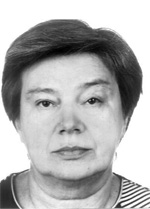E-journal for electrical and electronic engineers
AUTOMATYKA, ELEKTRYKA, ZAKLOCENIA
(AUTOMATICS, ELECTROTECHNICS, DISTURBANCES)
Vol. 14, nr 3 (53) 2023
Risk Assessment of Generation Curtailment in RES for Emergency States of Power Grids
Piotr Kacejko; Paweł Pijarski; Marek Wancerz; Sylwester Adamek
Abstract
The risk of emergencies in power grids may result in the need to repeatedly curtail the power generated from renewable energy sources (RES). The frequency of network emergency states occurring during the year can be determined based on available failure rate statistics. The power redispatch signal (this term means reducing generation in a renewable energy source and correspondingly increasing it in a centrally controlled source) may be issued by the appropriate network operator. The article presents the results of analyses, the aim of which was to assess the probable effects of annual generation reduction in a selected wind and photovoltaic power plant connected at the same grid node. An original method was proposed using Monte Carlo simulation, taking into account the generation technology and its annual distribution, and an external computational "engine" implementing sequences of flow calculations
Keywords
RES, probability, generation curtailment, risk analysis
Fig.
Bilbiography
1. Regulation (EU) 2019/943 of the European Parliament and of the Council of 5 June 2019 on the internal market for electricity: Regulation (EU) 2019/943, 2019.
2. M. Abbasghorbani, Y. Damchi, H. Rajabi Mashhadi: “Reliability-Centered Maintenance for Overhead Transmission Lines in Composite PowerSystem.“, Int. Trans. Electr. Energ. Syst. 2022, 2022, 1-11, doi:10.1155/2022/1170269.
3. R. Ahmadi, S. Wu, A. Sobhani: „Reliability Modeling and Maintenance Optimization for a Repairable System With Heterogeneity Population.“, IEEE Trans. Rel. 2022, 71, 87-99, doi:10.1109/TR.2021.3068633.
4. M. Enjavimadar, M. Rastegar: „Optimal reliability-centered maintenance strategy based on the failure modes and effect analysis in power distribution systems.“, Electric Power Systems Research 2022, 203, 107647, doi:10.1016/j.epsr.2021.107647.
5. J.H. Heo, M.K. Kim, J.K. Lyu: „Implementation of Reliability-Centered Maintenance for transmission components using Particle Swarm Optimization.“, International Journal of Electrical Power & Energy Systems 2014, 55, 238-245, doi:10.1016/j.ijepes.2013.09.005.
6. J-H. Heo, M.-K. Kim, G.-P. Park, J.T. Yoon, J.K. Park, S.-S. Lee, D.-H. Kim: „A Reliability-Centered Approach to an Optimal Maintenance Strategy in Transmission Systems Using a Genetic Algorithm.“, IEEE Trans. Power Delivery 2011, 26, 2171-2179, doi:10.1109/TPWRD.2011.2162752.
7. A. Abiri-Jahromi, M. Fotuhi-Firuzabad, E. Abbasi: „An Efficient Mixed-Integer Linear Formulation for LongTerm Overhead Lines Maintenance Scheduling in Power Distribution Systems.“, IEEE Trans. Power Delivery 2009, 24, 2043-2053, doi:10.1109/TPWRD.2009.2028785.
8. M.S. Alvarez-Alvarado, D. Jayaweera: „Reliability-based smart-maintenance model for power system generators.”, IET gener. transm. distrib. 2020, 14, 1770-1780, doi:10.1049/iet-gtd.2019.1186.
9. D. Zhang, W. Li, X. Xiong: “Overhead Line Preventive Maintenance Strategy Based on Condition Monitoring and System Reliability Assessment.”, IEEE Trans. Power Syst. 2014, 29, 1839-1846, doi:10.1109/TPWRS.2013.2295379.
10. H. Pandzic, A.J. Conejo, L. Kuzle, E. Caro: “Yearly Maintenance Scheduling of Transmission Lines Within a Market Environment.”, IEEE Trans. Power Syst. 2012, 27, 407-415, doi:10.1109/TPWRS.2011.2159743.
11. W. Li, J. Zhou, X. Xiong: “Fuzzy Models of Overhead Power Line Weather-Related Outages.”. IEEE Trans. Power Syst. 2008, 23, 1529-1531, doi:10.1109/TPWRS.2008.926081.
12. Y. Liu, C. Singh: “Evaluation of hurricane impact on composite power system reliability considering common¬cause failures.”, Int J Syst Assur Eng Manag 2010, 1, 135-145, doi:10.1007/s13198-010-0024-7.
13. K. Alvehag, L. Soder: “A Reliability Model for Distribution Systems Incorporating Seasonal Variations in Severe Weather.”, IEEE Trans. Power Delivery 2011, 26, 910-919, doi:10.1109/TPWRD.2010.2090363.
14. M. Panteli, P. Mancarella: “Modeling and Evaluating the Resilience of Critical Electrical Power Infrastructure to Extreme Weather Events.”, IEEE Systems Journal 2017, 11, 1733-1742, doi:10.1109/JSYST.2015.2389272.
15. M. Panteli, P. Mancarella: “Influence of extreme weather and climate change on the resilience of power systems: Impacts and possible mitigation strategies.”, Electric Power Systems Research 2015, 127, 259-270, doi:10.1016/j.epsr.2015.06.012.
16. Y. Zhou, A. Pahwa, S.-S. Yang: “Modeling Weather-Related Failures of Overhead Distribution Lines.”, IEEE Trans. Power Syst. 2006, 21, 1683-1690, doi:10.1109/TPWRS.2006.881131.
17. S. YANG, W. ZHOU, S. ZHU, Le WANG, L. YE, X. XIA, H. LI: “Failure probability estimation of overhead transmission lines considering the spatial and temporal variation in severe weather.”, J. Mod. Power Syst. Clean Energy 2019, 7, 131-138, doi:10.1007/s40565-017-0370-4.22
18. Y. Liu, C. Singh: “A Methodology for Evaluation of Hurricane Impact on Composite Power System Reliability.”, IEEE Trans. Power Syst. 2011, 26, 145-152, doi:10.1109/TPWRS.2010.2050219.
19. A. Chojnacki: “Właściwości niezawodnościowe napowietrznych linii dystrybucyjnych 110 kV.”, ELECTROTECHNICAL NEWS 2017, 85, 15-19, doi:10.15199/74.2017.7.3.
20. J. Wang, X. Xiong, N. Zhou, Z. Li, S. Weng: “Time-varying failure rate simulation model of transmission lines and its application in power system risk assessment considering seasonal alternating meteorological disasters.”, IET gener. transm. distrib. 2016, 10, 1582-1588, doi:10.1049/iet-gtd.2015.0745.
21. J.P. Che-Castaldo, R. Cousin, S. Daryanto, G. Deng, M.-L.E. Feng, R.K. Gupta, D. Hong, R.M. McGranaghan, O.O. Owolabi, T. Qu et al.: “Critical Risk Indicators (CRIs) for the electric power grid: a survey and discussion of interconnected effects.”, Environ. Syst. Decis. 2021, 41, 594-615, doi:10.1007/s10669-021-09822-2.
22. M. Weiss, M. Weiss, M.: “An assessment of threats to the American power grid.”, Energ Sustain Soc 2019, 9, doi:10.1186/s13705-019-0199-y.
23. T. Gush, C.-H.S. Kim, S. Admasie, J.-S. Kim, J.-S. Song: “Optimal Smart Inverter Control for PV and BESS to Improve PV Hosting Capacity of Distribution Networks Using Slime Mould Algorithm.”, IEEE Access 2021, 9, 52164-52176, doi:10.1109/ACCESS.2021.3070155.
24. N. Kumar: “Prabhansu. Artificial intelligence and machine learning applications in energy storage system: technology overview and perspectives.”, Emerging Trends in Energy Storage Systems and Industrial Applications; Elsevier, 2023; pp 1-26, ISBN 9780323905213.
25. P. Pijarski, P. Kacejko: “Elimination of Line Overloads in a Power System Saturated with Renewable Energy Sources.”, Energies 2023, 16, 3751, doi:10.3390/en16093751.
26. P. Pijarski, P. Kacejko, P. Miller: “Advanced Optimisation and Forecasting Methods in Power Engineering— Introduction to the Special Issue.”, Energies 2023, 16, 2804, doi:10.3390/en16062804.
27. W. Cole, A.W. Frazier: “Impacts of increasing penetration of renewable energy on the operation of the power sector.”, The Electricity Journal 2018, 31, 24-31, doi:10.1016/j.tej.2018.11.009.
28. IEO: “The Photovoltaic Market in Poland.”, Edition X, IEO BREC Institute of Renewable Energy, Warsaw, 2022.
29. E. Chomać-Pierzecka, A. Kokiel, J. Rogozińska-Mitrut, A. Sobczak, D. Soboń, J. Stasiak: “Analysis and Evaluation of the Photovoltaic Market in Poland and the Baltic States.”, Energies 2022, 15, 669, doi:10.3390/en15020669.
30. “Deregulated electricity structures and smart grids”; B. Khan, O.P. Mahela, S. Padmanaban, H.H. Alhelou, Eds.; CRC Press: Boca Raton, FL, 2022, ISBN 9781003278030.
31. P. Manohar, P. Rajesh, F.H Shajin: “A Comprehensive Review of Congestion Management in Power System.”, IJIE 2022, 14, doi:10.30880/ ijie.2022.14.06.030.
32. A. Pillay, S. Prabhakar Karthikeyan, D.P. Kothari: “Congestion management in power systems - A review.”, International Journal of Electrical Power & Energy Systems 2015, 70, 83-90, doi:10.1016/j.ijepes.2015.01.022.
33. C. Yuan, C. Hu, T. Li: “Review of Congestion Management Methods for Power Systems.”, IOP Conf. Ser.: Earth Environ. Sci. 2019, 233, 32025, doi:10.1088/1755-1315/233/3/032025.
34. N.I. Yusoff, A.A.M. Zin, A. Bin Khairuddin: “Congestion management in power system: A review.”, In 2017 3rd International Conference on Power Generation Systems and Renewable Energy Technologies (PGSRET). 2017 3rd International Conference on Power Generation Systems and Renewable Energy Technologies (PGSRET), Johor Bahru, 04-06 Apr. 2017; IEEE, 2017 - 2017; pp 22-27, ISBN 978-1-5090-5353-7.
35. Y. Ou, C. Singh: “Assessment of Available Transfer Capability and Margins.”, IEEE Power Eng. Rev. 2002, 22, 69, doi:10.1109/MPER.2002.4312218.
36. B. Wang, X. Fang, X. Zhao, H. Chen: “Bi-Level Optimization for Available Transfer Capability Evaluation in Deregulated Electricity Market.”, Energies 2015, 8, 13344-13360, doi:10.3390/en81212370.
37. S. Wang, S. Gao: “Available transfer capability analysis method of AC-DC power system based on security region.”, J. eng. 2019, 2019, 2386-2390, doi:10.1049/joe.2018.8529.
38. Z. Jinlong, Z. Huilin, B. Yanhong, D. Fangwei, Y. Yingxuan, Z. Haotian: “On-Line Assessment Method of Available Transfer Capability Considering Uncertainty of Renewable Energy Power Generation.”, In 2020 Asia Energy and Electrical Engineering Symposium (AEEES). 2020 Asia Energy and Electrical Engineering Symposium (AEEES), Chengdu, China, 29-31 May 2020; IEEE, 2020; pp 43-48, ISBN 978-1-7281-6782-4.
39. O.O. Mohammed, M.W. Mustafa, D.S.S. Mohammed, A.O. Otuoze: “Available transfer capability calculation methods: A comprehensive review.”, Int. Trans. Electr. Energ. Syst. 2019, 29, doi:10.1002/2050-7038.2846.
40. P.D. Pijarski: “Optymalizacja heurystyczna w ocenie warunków pracy i planowania rozwoju systemu elektroenergetycznego [Heuristic optimization in the assessment of operating conditions and development planning of the power system].”, Wydawnictwo Politechniki Lubelskiej [Lublin University of Technology Publishers]: Lublin, 2019, ISBN 978-83-7947-349-6.
41. S. Verma, S. Saha, V. Mukherjee: “Optimal rescheduling of real power generation for congestion management using teaching-learning-based optimization algorithm.”, Journal of Electrical Systems and Information Technology 2018, 5, 889-907, doi:10.1016/j.jesit.2016.12.008.23
42. H.D. Abrantes, C.A. Castro: “New branch overload elimination method using nonlinear programming.”, In 2000 Power Engineering Society Summer Meeting (Cat. No.00CH37134). 2000 Power Engineering Society Summer Meeting, Seattle, WA, USA, 16-20 July 2000; IEEE, 2000; pp 231-236, ISBN 0-7803-6420-1.
43. H.D. Abrantes, C.A. Castro: „A New Efficient Nonlinear Programming-Based Method for Branch Overload Elimination.“, Electric Power Components and Systems 2002, 30, 525-537, doi:10.1080/15325000290084948.
44. A. Shandilya, H. Gupta, J. Sharma: „Method for generation rescheduling and load shedding to alleviate line overloads using local optimisation.“, IEE Proc. C Gener. Transm. Distrib. UK 1993, 140, 337, doi:10.1049/ip- c.1993.0050.
45. L. Labed, D. Labed: „Extreme learning machine-based alleviation for overloaded power system.”, IETgener. transm. distrib. 2019, 13, 5058-5070, doi:10.1049/iet-gtd.2019.0531.
46. L. Lenoir, L. Kamwa, L.-A. Dessaint: “Overload Alleviation With Preventive-Corrective Static Security Using Fuzzy Logic.”, IEEE Trans. Power Syst. 2009, 24, 134-145, doi:10.1109/TPWRS.2008.2008678.
47. A. Udupa, G. Purushothama, K. Parthasarathy, D. Thukaram: “A fuzzy control for network overload alleviation.”, International Journal of Electrical Power & Energy Systems 2001, 23, 119-128, doi:10.1016/S0142- 0615(00)00049-1.
48. Y.-Y. Hong: “An enhanced expert system with fuzzy reasoning for line flow control in power systems.”, Electric Power Systems Research 1996,
39, 1-8, doi:10.1016/S0378-7796(96)01088-7.
49. Anemos: “Temporally and spatially high resolved time series of the fundamental meteorological pa-rameters wind speed and direction at different heights in order to planning and operating your wind farm.”, Available online: https://www.anemos.de/(accessed on 27 February 2023).
50. Solargis: “Developed and operated platforms enabling fast access to historical, recent, and forecast data for almost any location on the Earth.”, Available online: https://solargis.com/ (accessed on 27 February 2023).
51. S.A. Aleem, S.M.S. Hussain, T.S. Ustun: “A Review of Strategies to Increase PV Penetration Level in Smart Grids.”, Energies 2020, 13, 636, doi:10.3390/en13030636.
52. H. Al-Saadi, R. Zivanovic, S.F. Al-Sarawi: “Probabilistic Hosting Capacity for Active Distribution Networks.”, IEEE Trans. Ind. Inf. 2017, 13, 2519-2532, doi:10.1109/TII.2017.2698505.
53. R. Khomarudin, K.M. Banjar-Nahor, N. Hariyanto: “Mathematical Hosting Capacity Calculation due to Arise Voltage using The Equation of Line Approach.”, In 2022 5th International Conference on Power Engineering and Renewable Energy (ICPERE). 2022 5th International Conference on Power Engineering and Renewable Energy (ICPERE), Bandung, Indonesia, 22-23 Nov. 2022; IEEE, 2022 - 2022; pp 1-6, ISBN 978-1-6654-5548-0.
54. A. Pepiciello, A. Vaccaro: “An Optimization-based Method for Estimating Critical Inertia in Smart Grids.”, In 2019 IEEE International Conference on Systems, Man and Cybernetics (SMC). 2019 IEEE International Conference on Systems, Man and Cybernetics (SMC), Bari, Italy, 06-09 Oct. 2019; IEEE, 2019 - 2019; pp 2237-2241, ISBN 978-1-7281-4569-3.
55. N. Qamar, A. Arshad, K. Mahmoud, M. Lehtonen: “Hosting capacity in distribution grids: A review of definitions, performance indices, determination methodologies, and enhancement techniques.”, Energy Science & Engineering 2023, doi:10.1002/ese3.1389.
56. T.S. Ustun, J. Hashimoto, K. Otani: “Impact of Smart Inverters on Feeder Hosting Capacity of Distribution Networks.”, IEEE Access 2019, 7, 163526-163536, doi:10.1109/ACCESS.2019.2952569.
57. KIOS Research Center. IEEE 118-bus modified test system. Available online: https://www.kios.ucy.ac.cy/testsystems/index.php/ieee-118-busmodified-test-system/ (accessed on 19 January 2023).
58. S. Mahmoud, Awad: “Reliability Assessment for Overhead Power Transmission Lines Using Failure Rate Analysis.", Australian Journal of Basic and Applied Sciences 2016, 10, 34-49.
59. H. Pishro-Nik: “Introduction to probability, statistics, and random processes.”, Kappa Research, LLC: [Blue Bell, PA], 2014, ISBN 0990637204.
60. P. Pijarski, P. Kacejko, M. Wancerz: “Voltage Control in MV Network with Distributed Generation Possibilities of Real Quality Enhancement.”, Energies 2022, 15, 2081, doi:10.3390/en15062081.
61. P. Pijarski, P. Kacejko: “Methods of Simulated Annealing and Particle Swarm Applied to the Optimization of Reactive Power Flow in Electric Power Systems.”, AECE 2018, 18, 43-48, doi:10.4316/AECE.2018.04005.
62. PowerWorld, Simulator 22; PowerWorld Corporation: Canada, 2023.
63. Matlab, programming and numeric computing platform; MathWorks: USA, 2022, https://www.mathworks.com.24






































